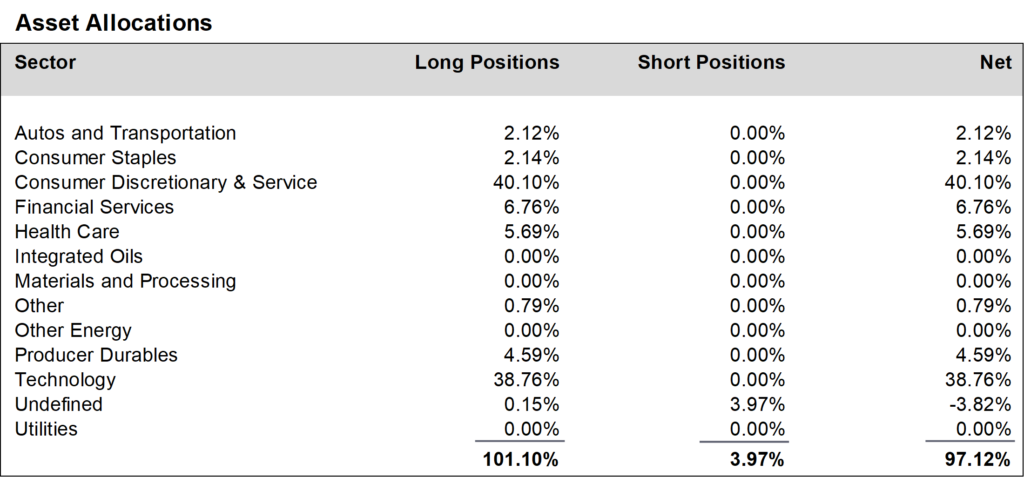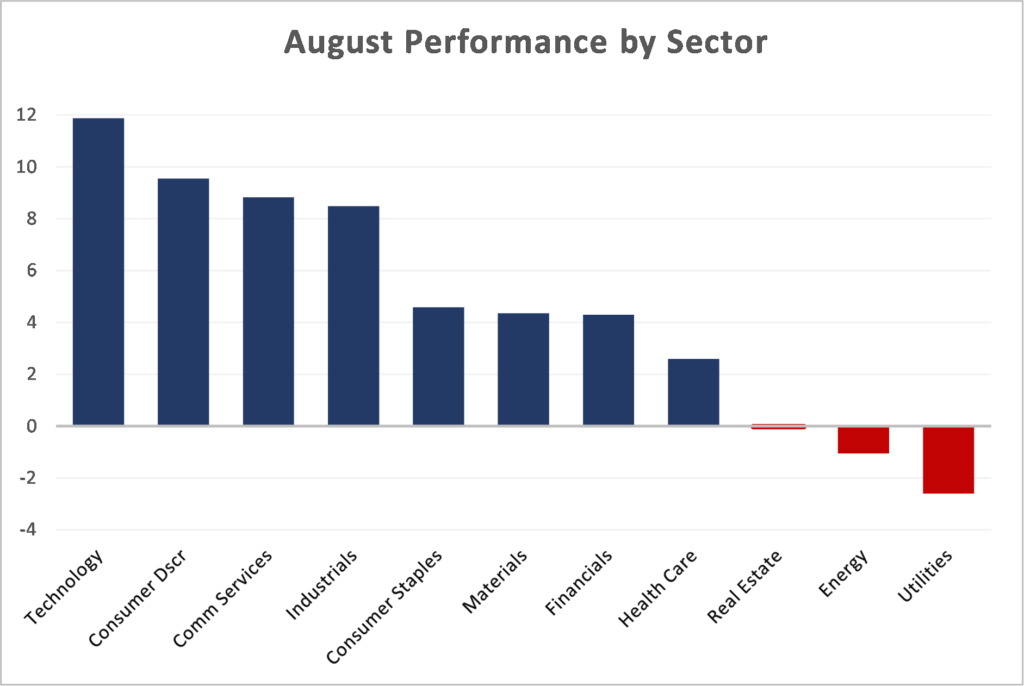
Ocean Park Capital Management
2503 Main Street
Santa Monica, CA 90405
Main: 310.392.7300
Daily Performance Line: 310.281.8577
Stock Indices:
| Dow Jones | 42,270 |
| S&P 500 | 5,911 |
| Nasdaq | 19,113 |
Bond Sector Yields:
| 2 Yr Treasury | 3.89% |
| 10 Yr Treasury | 4.41% |
| 10 Yr Municipal | 3.31% |
| High Yield | 7.26% |
YTD Market Returns:
| Dow Jones | -0.64% |
| S&P 500 | 0.51% |
| Nasdaq | -1.02% |
| MSCI-EAFE | 17.30% |
| MSCI-Europe | 21.20% |
| MSCI-Pacific | 10.50% |
| MSCI-Emg Mkt | 8.90% |
| US Agg Bond | 2.45% |
| US Corp Bond | 2.26% |
| US Gov’t Bond | 2.44% |
Commodity Prices:
| Gold | 3,313 |
| Silver | 33.07 |
| Oil (WTI) | 60.79 |
Currencies:
| Dollar / Euro | 1.13 |
| Dollar / Pound | 1.34 |
| Yen / Dollar | 144.85 |
| Canadian /Dollar | 0.72 |
Portfolio Overview
Ocean Park Investors Fund rose 4.06%* in August, roughly in line with the HFRI Equity Hedge Index (which rose 4.25%) and less than the gain posted by the S&P 500 (up 7.01%). For the year to date through August we continued to outperform the S&P 500: the fund was up 21.77%* and the S&P 500 was up 8.34%. Among the positions which buoyed our results for the month were Apple (up 21%), Nvidia (up 25%), and Zoom Video Communications (up 28%).
During August, we increased positions in the consumer staples sector and reduced positions in the healthcare sector. Exclusive of our short position in QQQ options, we finished the month at about 97% net long, up from about 94% in June. However, taking into account our QQQ short option hedges, our effective net long exposure was closer to 80%.
Daily updates on our activity are available on our Results Line, at 310-281-8577, and current information is also maintained on our website at www.oceanparkcapital.com. To gain access to the site enter password opcap.
*These results are pro forma. Actual results for most investors will vary. See additional disclosures on page 4. Past performance does not guarantee future results.




